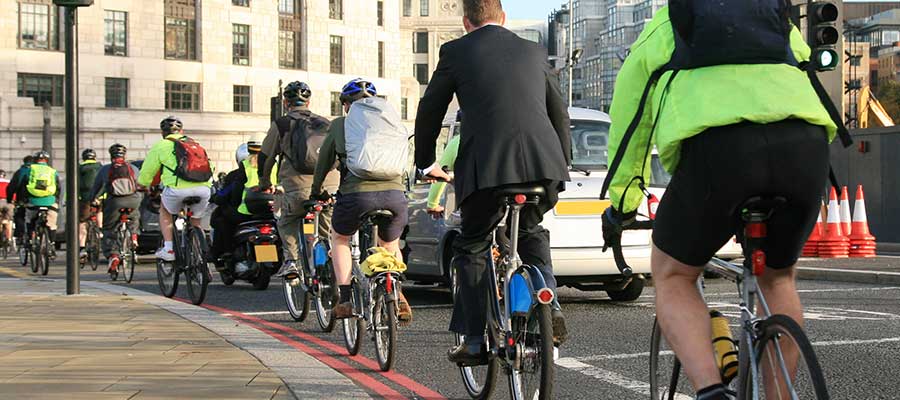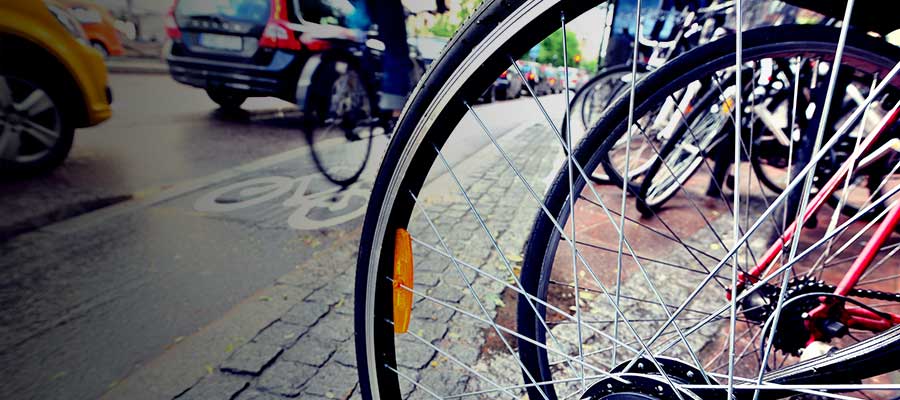A guaranteed seat, fresh air, zero pushing, invigorating, no polite conversation and free – that doesn’t sound like your typical daily commute in the UK, but it can be and people are catching on.
Cycling and running to work are fast becoming preferred commuting options in the UK, and with the bicycle market worth a significant £1.07 billion (a 5% gear change from last year) and the UK’s running population reaching an astonishing 10.5 million, it’s also becoming an attractive industry for entrepreneurs and investors alike. We’re here to explain why active commuting is receiving a lot of hype and how you can ride along with it.
On your marks, get set, go – why commuters are getting hooked
Approximately 1.5 million brits are embracing lycra and cycling at least five days a week. Here’s why active commuting is proving so popular:
It lowers your risk of an early death
It’s no secret that physical exercise reduces the risk of death. One hour’s worth of cycling can add one hour’s worth of life onto your years, as well as resulting in less sick days, less stress and significant NHS savings. If every Londoner walked or cycled for 20 minutes a day, it would save the NHS a significant £1.7 billion over the next 25 years. With people becoming increasingly aware of their physical health (thanks to health apps, smart watches and Jamie Oliver), cycling and running to work is naturally becoming fashionable.
It’s cheap
Rail commuters spend a fifth of their salary on season tickets and car owners splash out £3,727 per year on their daily commute. Meanwhile, cyclists are spending only £396 per year and runners, even less. Not only is running or biking to work great for the wallet, but it is also great for those cashing in on this extra disposable income. The bicycle parts and accessories market alone is worth £750 million, as cyclists invest in the latest tech and newest gadgets.

It’s environmentally friendly
The push to reduce our carbon emissions is on, as the government works hard to reach its 2050 carbon emission targets. Cars are at the forefront of the blame game when it comes to our carbon emissions, emitting on average 271g of CO2 per passenger, per kilometre. Many are feeling the pressure to switch to a more environmentally friendly mode of commute, and cycling and running are the natural, and cheap, solutions.
It’s quick
You might not think that running and cycling could be described as faster than road or rail, but when it comes to the daily commute, they are. We’re wasting more than one day per year sitting in traffic and using an average of £1,168 in fuel while we’re at it. Nearly half of London car trips can be cycled in under 11 minutes, and one-third could be walked in under 25. Not only that but combining commuting with exercise negates the gym visit after work. Double-win.
There’s no question about it – running and cycling to work is fantastic for you, the environment and your wallet. Switching even a mere 8km commute from car to bike results in 11.6 days increased life expectancy; 558.1 kg fewer carbon emissions and 0.25gms less nitrogen oxide emissions (the equivalent of 26 trees); 11 hours 35 minutes of time saved; and £416.17 of money saved over one year.
And there’s more; with reduced congestion, lower noise pollution and less stress, active commuting really is the magic pill, bringing plenty of growth opportunities with it.
Keep pedalling – opportunities
This year we saw London appoint its first Walking and Cycling Commissioner, Will Norman, tasked with making walking and cycling in the capital healthier, safer and more welcoming.
Cycling and walking to work is not only here to stay, it’s here to grow, as is consumer spend in the industry. The bicycle and components market alone is expected to achieve a CAGR of 3.51% between 2017 and 2026, providing significant investment opportunities in:
Commuter hubs
38% of British office workers would commute by bike if there were adequate changing facilities. Many businesses lack the space or money to facilitate this, which is why commuters are turning to cycling and running commuter hubs.
Providing somewhere to store clothes, take a shower, get dry, dress into something more appropriate and securely lock up your bike, they are the premium commuter service set to pop up over our towns and cities in the coming years.
Smart clothing
As smart clothing becomes more comfortable to wear, affordable and stylish, runners and cyclists can ditch the watch in favour of apparel that can monitor heart rate, speed, breathing and more.

We are also seeing thermally controlled smart clothing enter the market – maintaining optimum work-out temperatures by heating up or cooling down, making even winter commutes enjoyable.
Electric bikes
Electric bikes aren’t new but the technology that’s coming onto the market is. Sleek frames, integrated lights, better batteries – they make cycling for longer easier and are an attractive option for many. An annual growth rate of over 6% up to 2025 is predicted for this lucrative industry.
From that day on, if I was going somewhere, I was running – the future
Cycling activity is set to double by 2025, with the government opening up £1 billion worth of cycling and walking investment funds to local authorities over the next five years. During this time, London Mayor Sadiq Khan has pledged to spend a record £154 million per year on cycling – putting the city on par with Denmark and the Netherlands, where 62% and 44% respectively cycle to work and school.
The bicycle market has already grown 22% over the past five years, and with this investment, cycle hub facilities, improved cycle lanes and the latest gadgets entering the market, it’s an industry we will be keeping a very close foot on.
